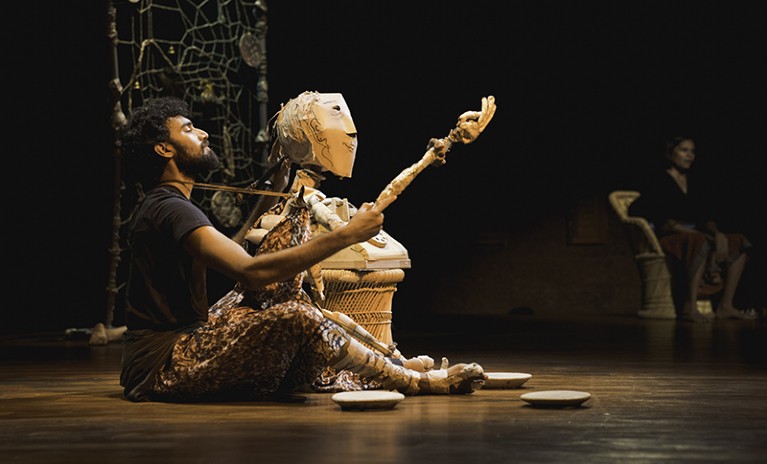
Vijay Ravikumar’s love of puppetry continues to influence how he communicates mathematics and science to the public.Credit: Alessandra Silver
When Vijay Ravikumar was in secondary school, he would go on long evening walks with his best friend, exploring the city they lived in: Chicago, Illinois. One night in 2000, they passed a rundown shopfront. In the window, many puppets were on display, and a sign read: “Apprentice wanted”.
Ravikumar, now a mathematician, had no particular affinity for puppets, but he called the shop the next day. It turned out to be Chicago’s oldest puppet theatre, run by two older men called Ralph and Lou. They needed help with the performances. Ravikumar spent hours each week in the basement, which was filled with more than 300 marionettes, repairing and preparing them for the next children’s show or ‘burlesque’ on Saturday nights. Ravikumar didn’t have a regular salary, but on occasion, one of the men would wave a US$20 bill at him and say: “For you.”
He loved the place. “I could experiment,” he says, “and every night there was the excitement of who would show up and what their response would be.”
Academic jobs are seldom scholars’ first jobs. Summer work, student jobs while at university and graduate-school side roles hold important lessons for budding researchers. Thinking about those early jobs years later can provide insights into personal development and the characteristics and skills that can transfer to a science career.
During his university years, Ravikumar kept returning to work in the theatre; in 2005, he took a year off to try to modernize it. But soon after, it caught fire and burned down. “It was such a tragedy,” he says.
Instead, Ravikumar spent his year off focusing on mathematics. It gave him solid ground in the turbulent time after the fire — and the field had enough unsolved mysteries to keep him engaged. He earned a PhD in geometry at Rutgers University in New Brunswick, New Jersey, in 2013. But he would not forget the lessons he learnt at the theatre. “I never just wanted to produce scientific knowledge for academics only, I wanted to serve the public at large, and I wanted real interaction with that audience.”
For researchers, non-academic jobs not only provide insights into what they value, but can also offer actual training. Graduate school felt like a luxury when imaging scientist Uri Manor started his PhD in cellular and molecular biophysics at Johns Hopkins University in Baltimore, Maryland, in 2005. The intensity was nothing compared with his job at a family-owned Italian restaurant, says Manor, now an assistant professor of cell and developmental biology at the University of California, San Diego. “Really, waiting tables is the ultimate multitasking,” he says. “It provided me with skills that gave me a unique edge in the lab.”
There were many challenges, he says: tending to tables at different stages of dinner, interacting with a spectrum of personalities, using physical and motor skills and improvising in changing conditions. Manor practised memorizing all customer orders, even with a group of 30, to challenge himself. The work made him resilient, he says. “There is little room for error. And when the inevitable error does arise, you have to keep your cool and find a solution. That taught me how to handle failures in the lab with grace — whether it is a botched experiment, a rejected manuscript or just a bummer result.”
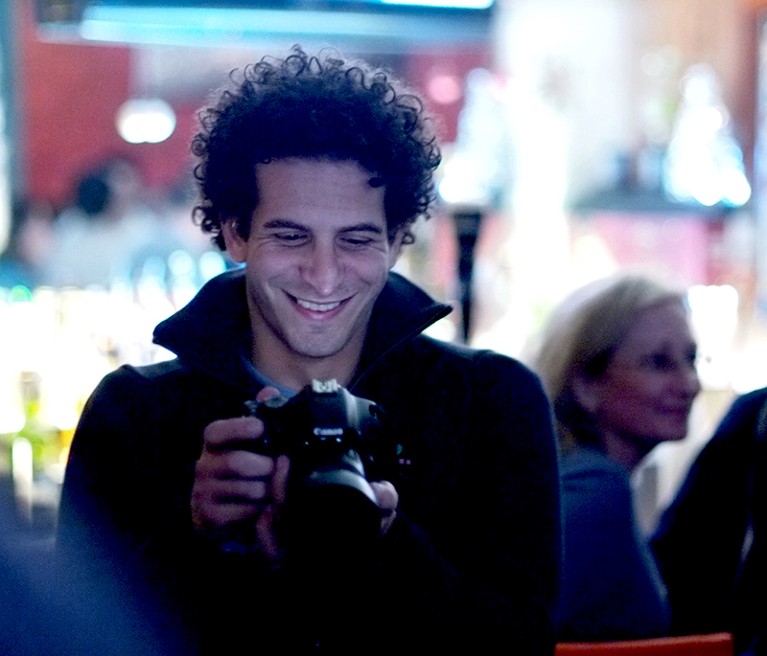
Uri Manor sharpened his imaging skills, and boosted his income, as a wedding photographer.Credit: Dacha Mullins
There was something else Manor liked about working in a restaurant: it was incentivized. At US restaurants, when you do a good job, the tips you get can be substantial. Manor now tries to find ways to build in more direct incentives to motivate the people in his laboratory, but realizes it is extremely tricky in an academic setting: “You don’t want to reward producing positive results.”
Manor took a second job while in graduate school to support his wife and two young kids. He started working as a wedding photographer’s part-time assistant and later became a photographer himself. As an imaging scientist, photography was really his specialization, says Manor: “It improved my editing skills as well, although of course you do a lot more editing in photography than in microscopy. Image-manipulation detectives would have a field day with my wedding data.”
Lessons from the past
Table of Contents
There are even philosophical parallels between scientific and non-scientific jobs. Anthropologist Agustín Fuentes at Princeton University in New Jersey worked in different restaurants as a cook for several years while in university and graduate school. He sees striking similarities between cooks and scientists: both have to put the right ingredients in and take the right steps. Timing is important, and they have to think of their audience, Fuentes argues. “And if you cook without care, passion and attentiveness to detail, it will not be good.”
Take paella, which can contain rice, prawns, vegetables, sausage and chicken. Each ingredient could be interesting and good on its own, but a combination of them makes the end product, says Fuentes. “The same is true for research,” he argues. “If you do it in a neutral, mechanistic way, you often miss the point. Connecting all the elements with care is what makes sense of it.”
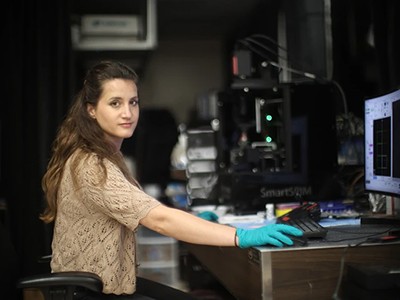
All through the night: sleep-deprived scientists share their stories
In early 2020, when the world was gripped by a mysterious virus, Adam Kucharski couldn’t stop thinking: I’ve experienced this before — albeit in a different way. Kucharski, a mathematical modeller in infectious-disease epidemiology at the London School of Hygiene & Tropical Medicine, had worked as a summer analyst in product development at a bank in London. This was just before the 2007–08 financial crisis reached its climax when Lehman Brothers, a giant US financial-services firm, went bankrupt. He observed parallels between the COVID-19 pandemic’s start and the economic disaster, noting in his 2020 popular-science book The Rules of Contagion, “People thought the banking system was stable and resilient, but shocks to it spread far more widely than people had anticipated.”
Another element that struck Kucharski was the way in which experts were trying to deal with uncertainty. “There was a lot of talk about that across banks and bars,” Kucharski says. “Who is gonna go under? People didn’t know who was at risk and who was exposed — just as we later would experience with the virus.”
In 2020, Kucharski became one of the modellers supplying data on the projected spread of the SARS-CoV-2 virus to the UK government. He observed what he had seen before: an over-reliance on the perceived version of reality, which might not reflect what’s actually going on. In early data collected during the first weeks of the pandemic, some 30 cases showed up, but there were probably thousands of cases in reality. “Those true numbers took a long time to get through to policymakers.”
Another thing Kucharski observed again in 2020: once a metric becomes an incentive, it stops being a good metric. For example, countries started chasing ‘number of tests performed’ targets. Doing more tests per identified case was seen as a good thing, because it produced a low positivity rate. The focus should have been on what the positive tests meant: that people should be isolating. “It gets people to make [a result] look good instead of coming up with a solution.”
Milking cows to tracking epidemics
Pandemic science also triggered previous work memories for virologist Marion Koopmans, head of the virology lab at the Erasmus Medical Center in Rotterdam, the Netherlands. As an undergraduate veterinary-medicine student at Utrecht University in the Netherlands, Koopmans worked for several months on a large farm in Florida in 1978. Cows were milked around the clock by workers who travelled from farm to farm. “I immediately saw how the health of these animals was impacted by the way some of the inexperienced workers handled them. I could almost predict which cows would develop udder inflammation.”
There was not much she could do for those cows, as a 22-year-old foreign woman among cowboys. She did try to discuss the issue with the farm owner, but to no avail. It taught Koopmans an important lesson that she recollected while studying the spread of COVID-19 in care homes. “We had to find people invested in infection prevention,” says Koopmans. “Most are already very busy and are not really motivated to change their practices.”
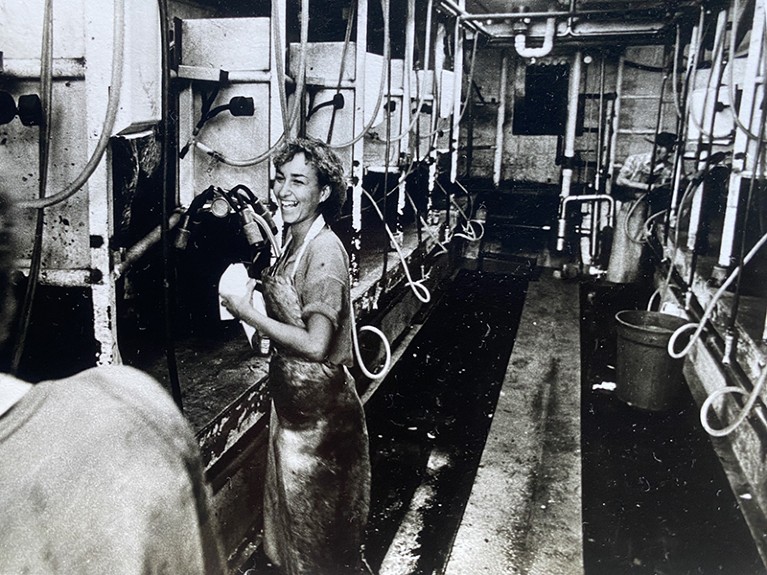
Marion Koopmans’s cow-milking days in 1978 stimulated her interest in the spread of infectious disease.Credit: M Kooren
Those early experiences were premonitions for what Koopmans would later realize: “I wanted to become a veterinarian, until I became one.” The possibilities for action are limited for a practising vet, especially in animal husbandry. “It’s easy: does this animal stand a good chance to recover? If not, it goes to the butcher. I didn’t find that very satisfying. I often wanted to know why [the disease occurred] and how it can be changed.” That curiosity led Koopman to pursue a PhD in virology at Utrecht University.
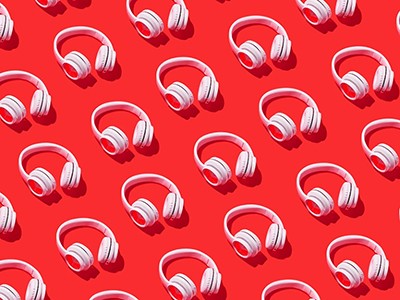
Sounds of science: how music at work can fine-tune your research
Most scientists quit their former jobs after embarking on a scientific career, but Ravikumar’s early life lessons stayed in the back of his mind. After his PhD training, he moved with his partner to India, where his parents were from. Once he started a tenure-track job at the Chennai Mathematical Institute in 2015, he felt he could pursue other activities. “I enjoyed the science, but I did feel a growing dissatisfaction about not reaching out to people outside academia.”
In a small fishing village near Chennai, Ravikumar started teaching art classes every Sunday to schoolchildren. They learnt how to draw perspectives or fold a hexaflexagon, an origami project. “When we asked the kids what they wanted, they often used to shout: ‘math!’”
In 2018, Ravikumar’s side interests grew so strong that he decided to leave academia and return to his longtime love: puppet theatre. He set up a theatre, called Ikkarai; the word is Tamil for ‘this shore’. It carries a similar meaning to the phrase ‘the grass is always greener on the other side’. However, just when the theatre was starting to get going, the COVID-19 pandemic forced him to abandon it.
For academics who had early, formative career experiences, what they learnt can help them to shape their future choices — and the memories can refill their inspiration. In November, Ravikumar will start an academic job at the Azim Premji University in Bengaluru. This time, he will develop maths education and outreach material at the secondary-school and university level. Will that include puppetry? “Well, my interests have a funny way of feeding into each other, so let’s see!”
